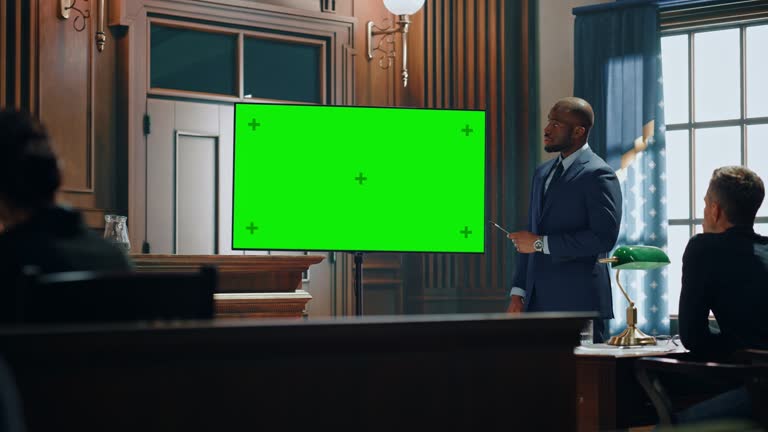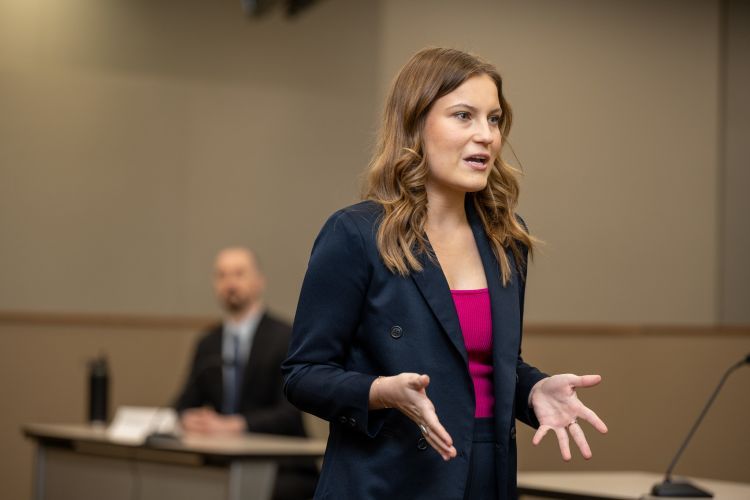Elevate Your Legal Practice with Ingenious Trial Presentations: Finest Practices and Advice
Browsing the Complexities of Test Presentations: Tips for Seamless Shipment and Engaging Disagreements
In the realm of legal procedures, the art of trial discussion stands as an essential determinant of success. The complexities fundamental in test presentations call for a fragile balance of strategy, ability, and finesse.

Understanding Trial Goals
To properly navigate a trial, it is important to have a clear understanding of the goals that require to be attained. Before entering the court, lawful groups have to define their goals and wanted outcomes. These objectives function as assisting concepts throughout the test, forming approaches and influencing decision-making processes.
Understanding trial objectives involves a detailed evaluation of the situation, lawful criteria, and the customer's benefits. Trial Presentations. It calls for a thorough exam of the realities, recognizing vital concerns, and preparing for possible obstacles. By establishing details and quantifiable goals, attorneys can tailor their arguments and discussions to straighten with the desired results
Furthermore, a clear grasp of trial purposes makes it possible for lawful teams to prioritize proof, witnesses, and lawful disagreements efficiently. It permits the development of a coherent story that reverberates with the discretionary, reinforcing the general case discussion.

Organizing Proof Properly
Having a clear understanding of test purposes lays the structure for organizing evidence properly in lawful procedures - Trial Presentations. By aligning the presentation of proof with the wanted results of the test, lawful teams can strengthen their debates and improve their persuasiveness. One important aspect of arranging proof is categorization. Organizing proof based on themes or importance to certain legal components can assist streamline the discussion and make complicated information extra absorbable for the judge or court.
One more secret element in arranging proof efficiently is developing a rational flow. Providing proof in a sequential and coherent way can aid develop a compelling narrative that sustains the legal disagreements being made. Additionally, utilizing aesthetic aids such as timelines, graphes, or charts can additionally enhance the organization of proof and assist in clearing up intricate connections or sequences of occasions.
In addition, making sure that all proof presented is acceptable and pertinent to the situation is essential. Unimportant or inadmissible evidence can detract from the stamina of the debate and possibly harm the integrity of the offering party. A careful testimonial and option procedure must be taken on to include just the most lawfully sound and impactful evidence in the trial presentation.
Crafting Persuasive Stories
Crafting engaging narratives plays a pivotal duty in providing influential disagreements during lawful proceedings. When creating a narrative for a test presentation, it is essential to develop a clear storyline that highlights vital factors and links them in a coherent manner. By weaving together proof, statement, and legal disagreements into a influential and cohesive story, legal specialists can efficiently support for their clients and raise the possibility of a desirable result in the court room.
Mastering Aesthetic Help
Effective use aesthetic help is key to improving the influence and clarity of test discussions. Visual aids, when used strategically, have the power to simplify complicated details, reinforce crucial factors, and leave a lasting perception on the court and court. To master visual help in test discussions, it is essential to make sure that they are clear, succinct, and pertinent to the arguments being made.
When integrating aesthetic aids, such as graphes, timelines, charts, or photos, into a trial presentation, it is necessary to maintain them aesthetically appealing yet specialist. The visuals need to enhance the spoken arguments, providing a graph of the information being talked about without overwhelming the audience with unnecessary details.
Moreover, exercising with the visual help beforehand is this crucial to make sure a smooth shipment during the trial. Familiarizing oneself with the content, transitions, and timings of each aesthetic help can assist preserve the flow of the presentation and prevent technological problems that might develop.
Providing Impactful Closing Disagreements
A compelling closing argument works as the end result of a trial presentation, enveloping the core story and convincing the judge and court in the direction of a positive decision. To deliver an impactful closing debate, it is critical to succinctly evaluate bottom lines, highlight the toughness of your situation, and deal with any weak points in a calculated manner. Begin by outlining the major disagreements that sustain your client's position, stressing why the proof presented throughout the test supports your story. It is necessary to create a feeling of cohesion and quality, assisting the discretionary towards the preferred conclusion.
In addition, incorporating emotional appeal can additionally see this reinforce your closing debate. Inevitably, a well-crafted closing disagreement need to leave a long lasting impression, engaging the judge and jury to rule in your customer's favor.
Verdict
To conclude, mastering test presentations involves understanding objectives, organizing proof, crafting stories, making use of aesthetic aids, and providing impactful closing disagreements. By executing these approaches successfully, lawyers can offer their instance flawlessly and make engaging debates in the courtroom. It is crucial click for more to browse the complexities of trial presentations with precision and ability to attain success in lawful procedures.
By aligning the presentation of evidence with the wanted end results of the trial, legal groups can reinforce their disagreements and improve their persuasiveness (Trial Presentations). To master aesthetic help in trial presentations, it is crucial to make certain that they are clear, succinct, and appropriate to the arguments being made
A compelling closing debate serves as the culmination of a test presentation, encapsulating the core story and convincing the judge and court towards a beneficial decision. Begin by detailing the primary arguments that sustain your client's placement, stressing why the evidence offered throughout the trial supports your story.In conclusion, mastering trial discussions includes understanding purposes, organizing proof, crafting narratives, making use of visual help, and providing impactful closing arguments.